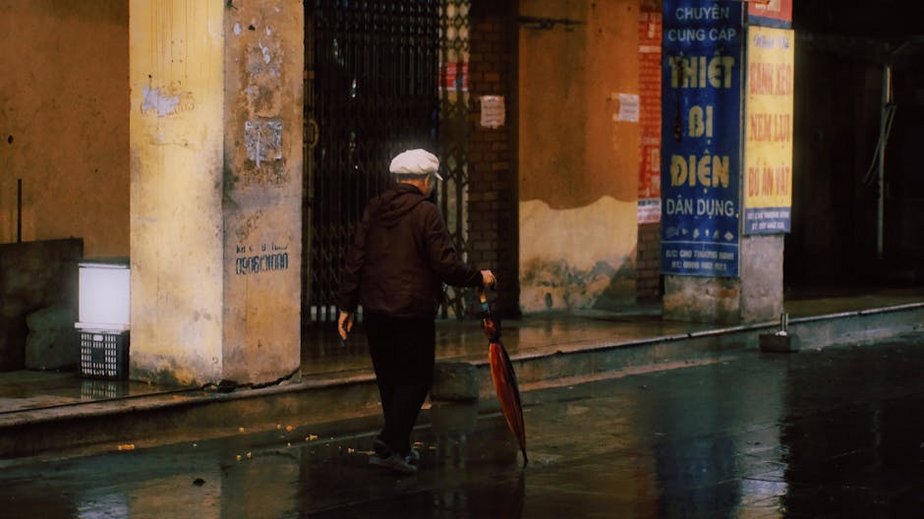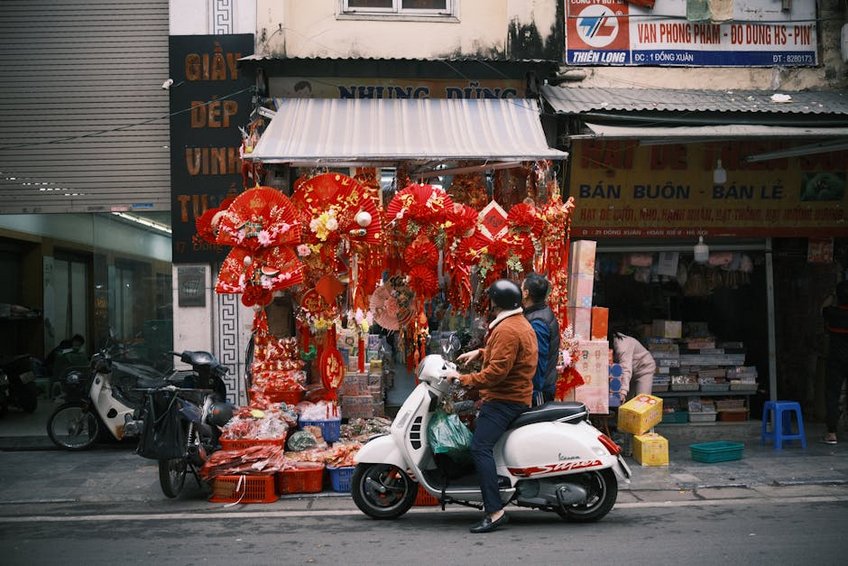Hanoi Old Quarter: Your Ultimate Guide to Vietnam’s Historic Heart
Stepping into the Hanoi Old Quarter is like walking through a living museum where centuries of history, culture, and commerce collide in the most captivating way. This historic district, known locally as “Phố Cổ,” represents the soul of Vietnam’s capital city, offering visitors an authentic glimpse into traditional Vietnamese life alongside modern energy. The maze-like network of 36 ancient streets, each historically dedicated to a specific craft or trade, creates an endlessly fascinating urban landscape that rewards exploration. From the moment you arrive, your senses will be overwhelmed with the aroma of sizzling street food, the sounds of buzzing motorbikes, and the visual spectacle of colonial architecture mixed with traditional tube houses. Navigating the Hanoi Old Quarter requires some preparation but delivers unparalleled cultural immersion that makes Vietnam such a memorable destination for Western travelers. Whether you’re a history buff, food enthusiast, or simply seeking authentic experiences, this guide will help you make the most of your visit to this incredible neighborhood.
Hanoi Old Quarter Essential Information – What Every Traveler Should Know
Understanding the basic facts about Hanoi Old Quarter will significantly enhance your experience in this historic district. Located in the Hoàn Kiếm District of central Hanoi, this area covers approximately 100 hectares and dates back to the 11th century during the Ly Dynasty. The neighborhood’s unique layout features narrow streets organized by traditional guilds, where each street specialized in a particular craft—a tradition that continues today in modified form. You’ll still find streets dedicated to silk, silverware, bamboo products, and traditional medicines, though many now cater to tourists with souvenirs and cafes. The architecture presents a fascinating blend of French colonial buildings, traditional Vietnamese “tube houses” (narrow, deep buildings designed to avoid taxes based on street frontage), and modern structures. Most importantly for Western visitors, the Old Quarter remains remarkably authentic despite its popularity, offering genuine cultural interactions alongside tourist amenities.
Historical Significance – Understanding the Context
- The area served as Hanoi’s primary commercial center since the 11th century, with merchants and craftspeople organizing by trade guilds along specific streets
- French colonial influence from the late 19th century added European architectural elements while maintaining the traditional street layout and commercial character
- Despite heavy bombing during the Vietnam War, the Old Quarter survived remarkably intact and continues to function as both a residential neighborhood and tourist destination
- Budget travelers can manage with $30-50 USD per day staying in hostels, eating street food, and using walking as primary transportation
- Mid-range visitors should budget $80-120 USD daily for comfortable hotels, restaurant meals, some taxis, and entrance fees to attractions
- Luxury experiences range from $150-300+ USD per day featuring boutique hotels, fine dining, private guides, and spa treatments
- Vietnam Tourism Official Website
- Lonely Planet Hanoi Guide
Geographical Layout – Navigating the Maze
Finding your way around the Hanoi Old Quarter can initially feel overwhelming but becomes part of the adventure once you understand the basic organization. The district is bounded by Hoàn Kiếm Lake to the south, the Long Biên Bridge to the north, the Red River to the east, and the citadel and railway line to the west. The 36 streets (though actually more than 70 today) generally run parallel or perpendicular to each other, creating a grid-like pattern that’s more logical than it first appears. Street names typically begin with “Hàng” (meaning “merchandise”) followed by the product traditionally sold there—Hàng Đường (Sugar Street), Hàng Chiếu (Rush Mat Street), Hàng Mã (Votive Paper Street). While many streets still specialize in their traditional products, others have evolved to serve modern tourism while maintaining their historical character.

Hanoi Old Quarter Planning Your Trip – Timing, Budget, and Preparation
Proper planning transforms your Hanoi Old Quarter experience from overwhelming to unforgettable. Western travelers should consider several key factors when preparing for this adventure, including seasonal weather patterns, budget requirements, and necessary preparations for navigating this intense urban environment. The ideal duration for exploring the Old Quarter is 3-4 days, allowing sufficient time to experience both the major attractions and hidden gems at a comfortable pace. You’ll want to balance structured activities with ample time for spontaneous exploration—getting lost in the alleyways often leads to the most memorable discoveries. Accommodation booking should be done in advance, especially during peak seasons, with numerous options ranging from budget hostels to luxury hotels within the district itself. Remember that while the Old Quarter is extremely walkable, the chaotic traffic requires some adjustment for those unfamiliar with Southeast Asian cities.
Best Time to Visit Hanoi Old Quarter
Timing your visit correctly dramatically affects your experience in the Hanoi Old Quarter. The most pleasant weather occurs during autumn (September-November) and spring (February-April), when temperatures range from 70-80°F (21-27°C) with lower humidity and minimal rainfall. These seasons offer ideal conditions for exploring the narrow streets on foot without extreme heat or downpours. Winter (December-January) can be surprisingly cool, with temperatures sometimes dropping to 50°F (10°C), requiring light jackets—especially in the evenings. Summer (May-August) brings intense heat, high humidity, and frequent heavy rainfall, though this is also when you’ll find fewer tourists and potentially better deals. Avoid the Lunar New Year (Tet) period in late January/early February, when many businesses close and transportation becomes extremely crowded as Vietnamese travel to visit family.
Budget Planning and Costs for Western Travelers
Essential Preparation Checklist
Preparing adequately for your Hanoi Old Quarter adventure ensures a smoother and more enjoyable experience. First, ensure your passport has at least six months validity and check Vietnam visa requirements—most Western nationals need either an e-visa or visa on arrival arranged in advance. Pack comfortable walking shoes as you’ll be exploring primarily on foot, along with light, breathable clothing for the humid climate and a light jacket for cooler evenings or air-conditioned spaces. Download offline maps and translation apps since English proficiency varies greatly outside tourist areas. Bring small denominations of Vietnamese Dong (VND) for street vendors who may not have change for large bills. Finally, prepare mentally for the sensory overload—the constant noise, crowded streets, and intense smells are part of the authentic experience that makes the Old Quarter so memorable.
Hanoi Old Quarter Top Attractions and Activities – Must-See Experiences
The Hanoi Old Quarter offers an incredible diversity of attractions and activities that cater to every type of traveler. While simply wandering the atmospheric streets provides endless entertainment, certain experiences shouldn’t be missed during your visit. Cultural landmarks like the ancient Bach Ma Temple and the iconic Đồng Xuân Market offer glimpses into both spiritual and commercial traditions that have defined this neighborhood for centuries. Food experiences range from street food tours to cooking classes that introduce you to Vietnam’s incredible culinary heritage. Shopping opportunities abound from traditional crafts to modern souvenirs, while evening entertainment includes water puppet shows, rooftop bars, and night markets. The key to enjoying the Old Quarter’s attractions is balancing planned activities with spontaneous discovery—some of the best experiences happen when you stumble upon a hidden courtyard, a family-run restaurant, or a traditional craft workshop not mentioned in guidebooks.
Must-See Highlights for First-Time Visitors
Certain attractions deserve priority on any first visit to the Hanoi Old Quarter. Start at Hoàn Kiếm Lake just south of the district, where the iconic red Húc Bridge leads to Ngọc Sơn Temple on a small island—particularly beautiful at sunrise when locals practice tai chi along the shores. The massive Đồng Xuân Market, the largest covered market in Hanoi, offers an authentic shopping experience across three floors of merchandise from fresh produce to clothing and souvenirs. Bach Ma Temple, the oldest temple in Hanoi dating back to the 9th century, represents the spiritual heart of the Old Quarter with its unique architecture and peaceful atmosphere. For a perspective above the chaos, visit one of the many rooftop bars like Top of Hanoi or Legend Beer for panoramic views especially spectacular at sunset. Finally, don’t miss the opportunity to simply sit at a streetside café with Vietnamese coffee and observe the fascinating street life that unfolds around you.
Hidden Gems and Local Favorites
Beyond the main attractions, the Hanoi Old Quarter conceals numerous hidden gems that offer more authentic experiences away from the tourist crowds. Explore the narrowest alleyways like Mã Mây Street where you’ll find beautifully preserved traditional tube houses and family-run restaurants serving generations-old recipes. Visit the traditional medicine shops on Lãn Ông Street where herbalists still practice ancient healing methods using hundreds of dried plants, roots, and animal parts. Discover the secret cafes hidden behind seemingly ordinary storefronts, often accessed through narrow passages leading to beautiful courtyard gardens. For a unique cultural experience, attend a water puppet show at the Thăng Long Theatre, a traditional art form originating from rural villages in the Red River Delta. Finally, venture slightly beyond the main tourist area to neighborhoods like the railway street cafés or the flower market at Quảng Bá for experiences most visitors never discover.
Hanoi Old Quarter Practical Travel Information – Transportation, Accommodation, and Navigation
Navigating the practical aspects of your Hanoi Old Quarter visit requires some specific knowledge to ensure a smooth and enjoyable experience. Transportation presents the biggest challenge for Western visitors, with the infamous motorcycle traffic creating what appears to be chaotic movement but actually follows its own logical patterns. Crossing streets requires confidence—walk slowly and steadily at crosswalks, allowing vehicles to flow around you rather than stopping abruptly. Accommodation options range from budget hostels to luxury hotels, with the most convenient locations being near Hoàn Kiếm Lake for easy access to both the Old Quarter and other parts of Hanoi. Communication can be challenging as English proficiency varies greatly, though most tourist businesses have English-speaking staff. Finally, understanding local customs and etiquette will enhance your interactions with residents who generally appreciate visitors showing respect for their culture and traditions.
| Accommodation Type | Features and Location | Price Range (USD per night) |
|---|---|---|
| Budget Hostels | Dormitory rooms, social atmosphere, central locations on small streets | $8-15 |
| Mid-Range Hotels | Private rooms with amenities, often in converted colonial buildings | $30-70 |
| Boutique Hotels | Design-focused properties with personalized service, hidden courtyards | $80-150 |
| Luxury Properties | International standards, rooftop pools, prime locations near the lake | $150-300+ |


